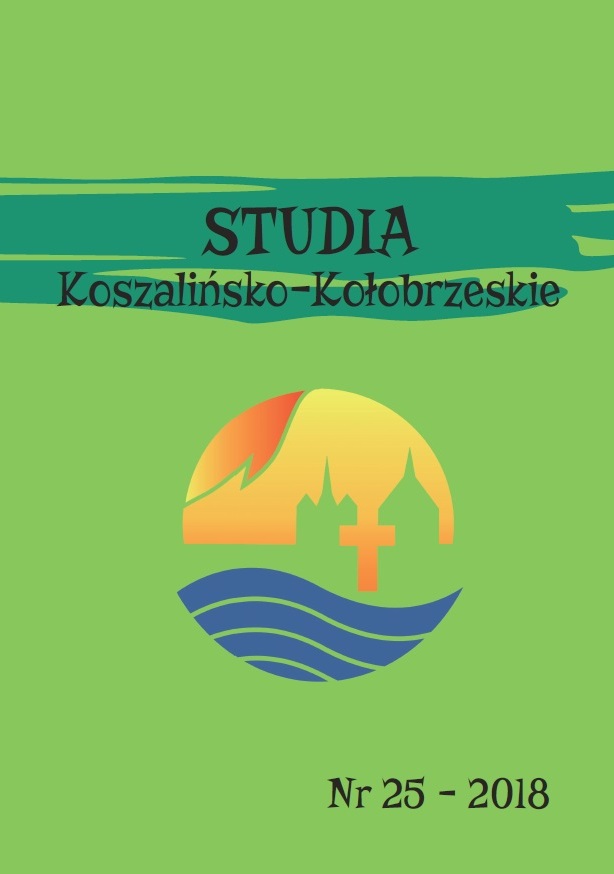
We kindly inform you that, as long as the subject affiliation of our 300.000+ articles is in progress, you might get unsufficient or no results on your third level or second level search. In this case, please broaden your search criteria.

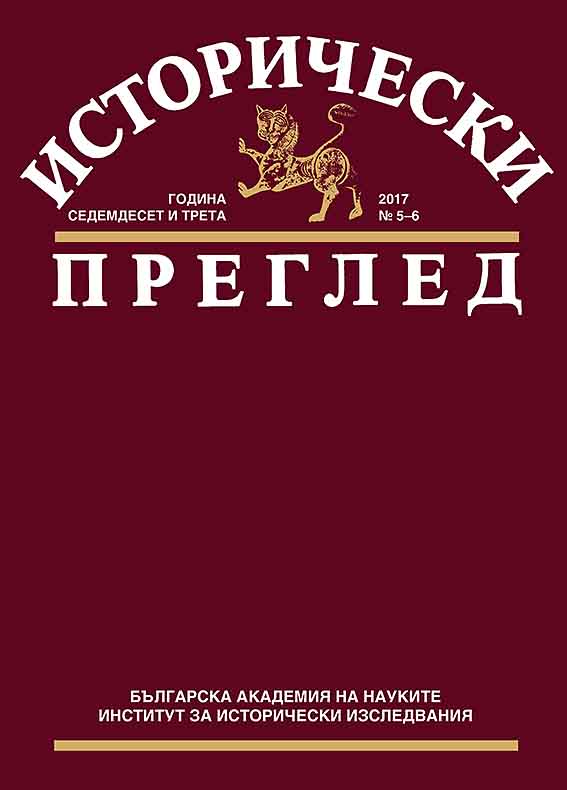
In the National Library in Sofia under the signature of Rц ХVІІ.2 a Russian Prayer printed book from the 17th century is preserved. On pages added later there are three groups of notes written by priest Hristo. The third group of notes from 1760 have the character of a short chronicle. The first nine notes indicate the number of years passed between important Biblical events. The following eight notes are dedicated to historical events from the creating of the Slavonic alphabet to the capture of Constantinople in 1453. Probably the source of the evidence is a Serbian short chronicle. Priest Hristo is one of the last writers who follow the medieval model of describing history.
More...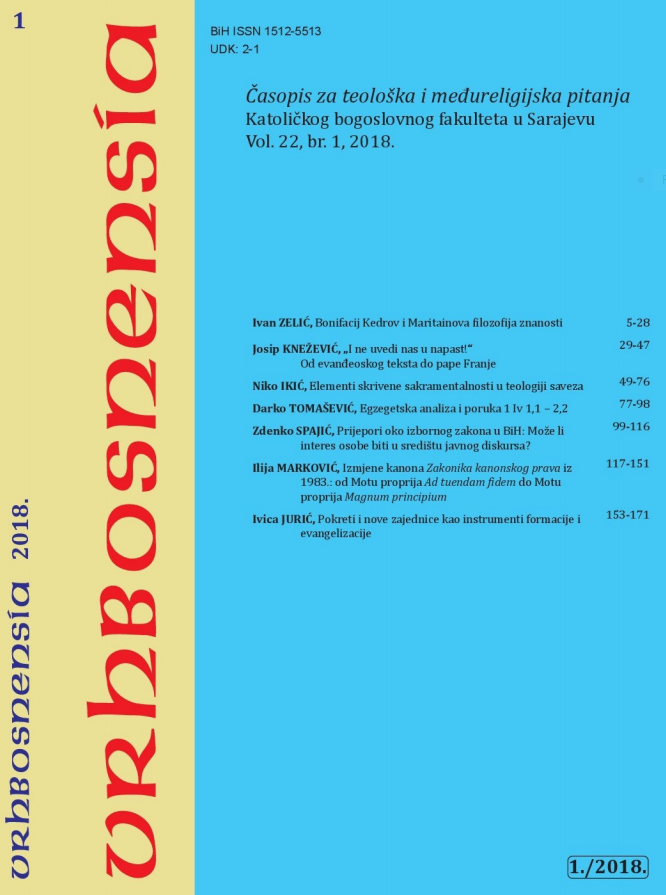
Oni koji su organizirali ovaj okrugli stol u ime IZ BiH, napisali su u smjernicama pozvanim predavačima da žele doprinijeti „ublažavanju napetosti između religija i sekularnih određenja stvarnosti, kao i napetosti između religija i unutar religija". Također su istaknuli kako u BiH „prisutnost religija u javnom prostoru ima veću težinu negoli u zemljama zapadne Europe. S druge strane, u BiH kao tradicionalnom multietničkom i multireligijskom društvu raspravljanje pitanja religije i sekularnosti implicira osjetljivost i odgovornost". Kao kršćanin i građanin ove zemlje svim srcem podupirem ovo nastojanje. U kratkom vremenu koje nam je dodijeljeno mogu iznijeti neke misli kršćanskih sociologa religije, pravnika i teologa provjerene na osobnom iskustvu s drukčijima koji nisu opasnost, nego ljudske skupine i pojedinci sa svojim pravima i potrebama. Pri tome pretpostavljam kao razmjerno jasan pojam javnog prostora u socijalnoj etici.
More...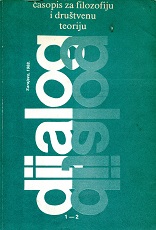
In this work the author seeks for the explanation of the most monstrous crime in human history — the Holocaust, applying his core dialectics theory to the symbolic relationship between the Nazis and Jews. He thus claims that anti- -Semitism of the Nazis is related to the core dialectics of the German social character. The notion of »core dialectics« relates to the author’s core personality theory in which a basic distinction is made between the »separant« and »participant« personality types. This distinction is then applied to group relationships, where German social character is tabled separant and the Jewish participant. The author stresses that in accordance with their separant traits the Germans, having rejected Christianity and the characteristically Jewish participant restraints of law and morality, were liable to accept Hitler and Nazism as reincarnations of the old Germanic mythological values expressed in the amorality of the Northern Gods of war and the pagan tribal family of Aesir in which everything was permitted and where only power counted. On the other hand, a conspicuous characteristic of the Jewish social character is their tendency towards sacrificing themselves, the tendency initiated by Jesus Christ as the archetypal participant victim. The clashes between the Jews and European separant societies, which had started as early as 332. B. C. when Alexander conquered Palestine, resulted in the widest possible range of conflicts, where the Holocaust was the last and the most horrible one in the series.
More...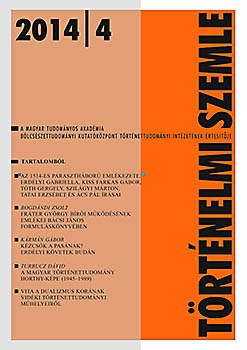
Jenő Szűcs (1928−1988) was a historian of great influence in the 1970s and 1980s, one of the renewers of Hungarian historical studies but has since been partially forgotten. In the 1970s, he wrote several important works on the „ideology” of Dózsa’s peasant war, that is, on the religious-intellectual background of the revolt. In striking opposition to the Marxist political understanding of the era, he did not pinpoint the real motives of the Dózsa revolt in economic and social tensions but in the peculiar spiritualism of Franciscan intellectuals. He saw the concepts of the Franciscan opposition as a kind of „pre-Reformation”. It was in connection to the Dózsa revolt that Jenő Szűcs elaborated his famous and much disputed thesis on the roots of Hungarian Protestant movements in the Franciscan opposition. The present essay seeks to weigh Szűcs’s four-decade old theses: it studies them in the light of the latest international trends in the research of Reformation and Millenarism.
More...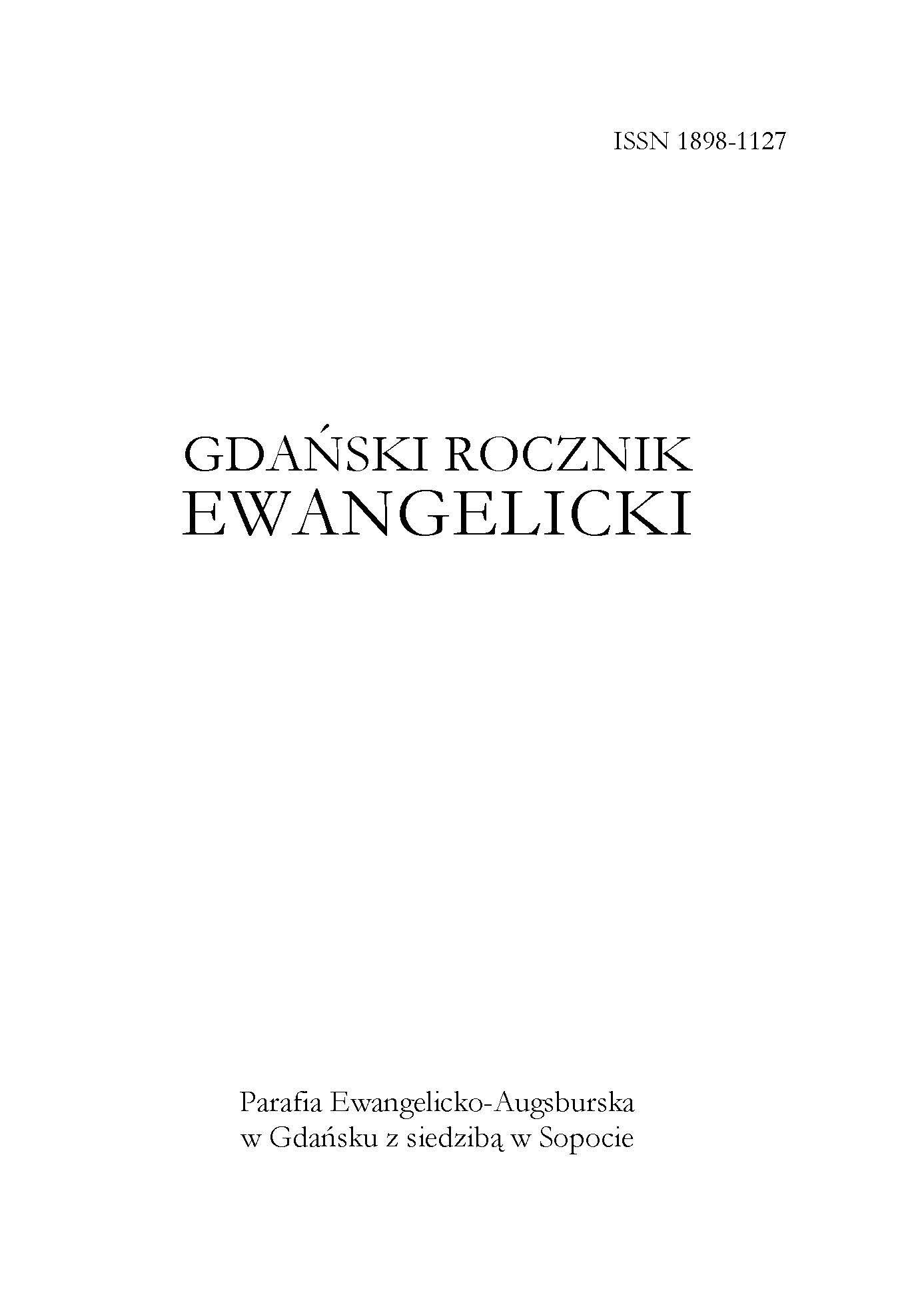
The main part of the article „Martin Luther’s Sermon at the Dedication of the Castle Church in Torgau” is a translation to Polish of the Reformer’s sermon on the 5th of October 1544 to the text from Luke 14:1-11. It was delivered during the ceremony of consecration of one of the first churches built from the beginning as an evangelical temple. The text of the translation is accompanied by an introduction, which discusses the church in Torgau and the circumstances of its consecration, as well as a commentary that includes the main threads of M. Luther’s sermon, which include: definition of an evangelical service, questions of remembering the Sunday, and the social structure based on various vocations.
More...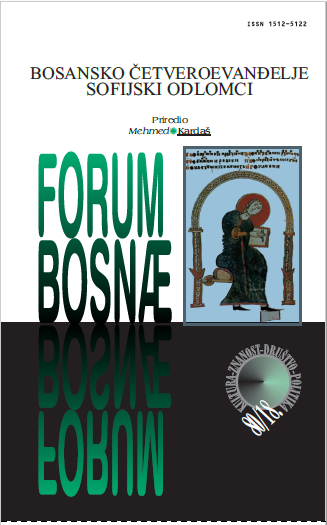
The Sophia fragment of the Gospels comes from a mediaeval codex that belonged to the Bosnian Church. It is kept in the Bulgarian National Library of Ss. Cyril and Methodius in Sophia, under call sign. НБКМ 23+468, in the Славянски ръкописи or Slavic Manuscripts collection. The surviving fragment comprises 52 pages from what was originally a much larger manuscript. It contains parts of the second half of the Gospel according to Matthew and the beginning of the Gospel according to Mark. The surviving sections of the codex offer no information that might point to the book's earliest owners and the manuscript has no marginal glosses, but repairs to it and liturgical markings added subsequently do suggest it may have been kept for at least a short period of time in an Orthodox monastery. The Sophia Gospels were copied out in the second half of the 14th century in a Cyrillic script whose palaeographic and orthographic features are consistent with contemporary Church Slavonic manuscripts from Bosnia, while linguistic forms found in the fragments suggest they may have come from an area with a diphthongic value for Jat. The lexical choices in the Sophia Gospels are reliable evidence that the exemplar used by the scribe was highly archaic, a finding in line with the current state of knowledge regarding the Bosnian group, which passed on the oldest version of Cyril and Methodius’ translation of the New Testament. This critical edition of the Sophia Gospels, which includes variants from two other Bosnian manuscripts, the Vrutok and the Dovolje Gospels, has confirmed the high degree of closeness between the exemplars of the Sophia and of the Vrutok gospels. This research makes it possible to state that the Bosnian Sophia Gospels offer a typical example of the New Testament text as preserved under the aegis of the Bosnian Church.
More...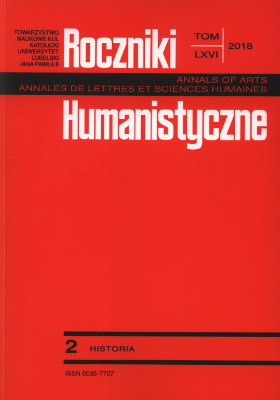
The article describes the life of priest Edward Choma. He was born in 1889 in Zloczow in Eastern Galicia. In 1913 he was ordained a priest and began pastoral work in the diocese of Lviv. In 1917 he was appointed to the Austrian army, in which he served until October 1918. After returning to Lviv in November 1918, he volunteered for the Polish army. Initially, he was a chaplain in the 38th Infantry Regiment, and then he was a parish priest of the 4th Infantry Division. After the end of the Polish-Bolshevik war he became a chaplain of the military parish in Skierniewice (1921-1930), then a military parish in Słonim (1930-1936) and a military parish in Radom (1936-1939). In September 1939 in more unknown circumstances he got into Soviet captivity and was murdered in the Katyn forest in April 1940.
More...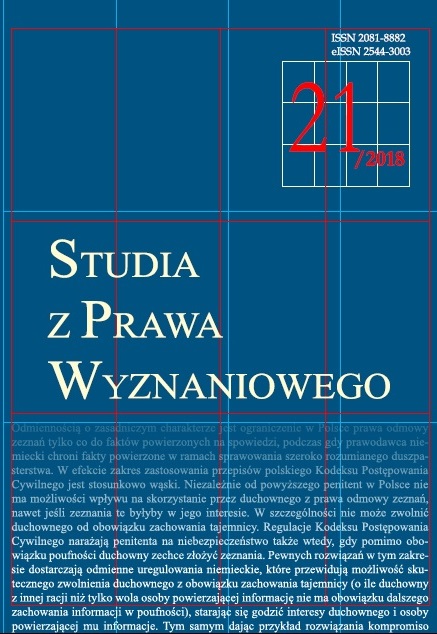
The aim of this article is to present the legal forms of establishing cooperation between medical facilities and chaplains with a view to guaranteeing patients’ right to pastoral care. The main research problem concerns defining the legal relationship between the chaplain and the medical facility in which he provides pastoral care. More specifically, the study aims to characterize the legal relationship between the chaplain and the medical facility taking into account the following types of employment: employment contracts, civil law contracts and voluntary work. The analysis is based on the dogmatic and, to a lesser extent, historical method. The results indicate that employment contracts are especially important in shaping the legal relationship between the chaplain and medical facility. The legal relationship between the chaplain and medical facility is general in character under Polish law owing to the fact that it is necessary to respect the institutional relations between the state and churches and other religious organizations. The specific duties of chaplains are defined by the law of their religious community, which, however, does not automatically apply in Polish law.
More...
Circumcision is a surgical practice. It is usually practiced for male and sometimes for female in some countries; but female circumcision isn’t common in comparison with male circumcision. Circumcision was practiced by different communities in the past and was accepted as a religious ritual by these nations. Circumcision in Jewish is a covenant with Rabb and Jews so all jews have to circumcise their all sons. Circumcision in Cristianity is accepted as the spiritial cleanliness so they don’t do surginal practice. Cimcumcision among Muslims always is practiced to male but to female in somewhere not by all muslims. Because there are diffirent opinions among Islamic jurists. However circumcision is accepted as a good custom by most of muslims. As known that firstman who was circumcised the Messenger Abraham. After the Messenger Abraham circumcised his sons called İsmail and İshak with the command of God. Circumcision is accepted as medical for male according to most of specialist doctors but not medical for female.
More...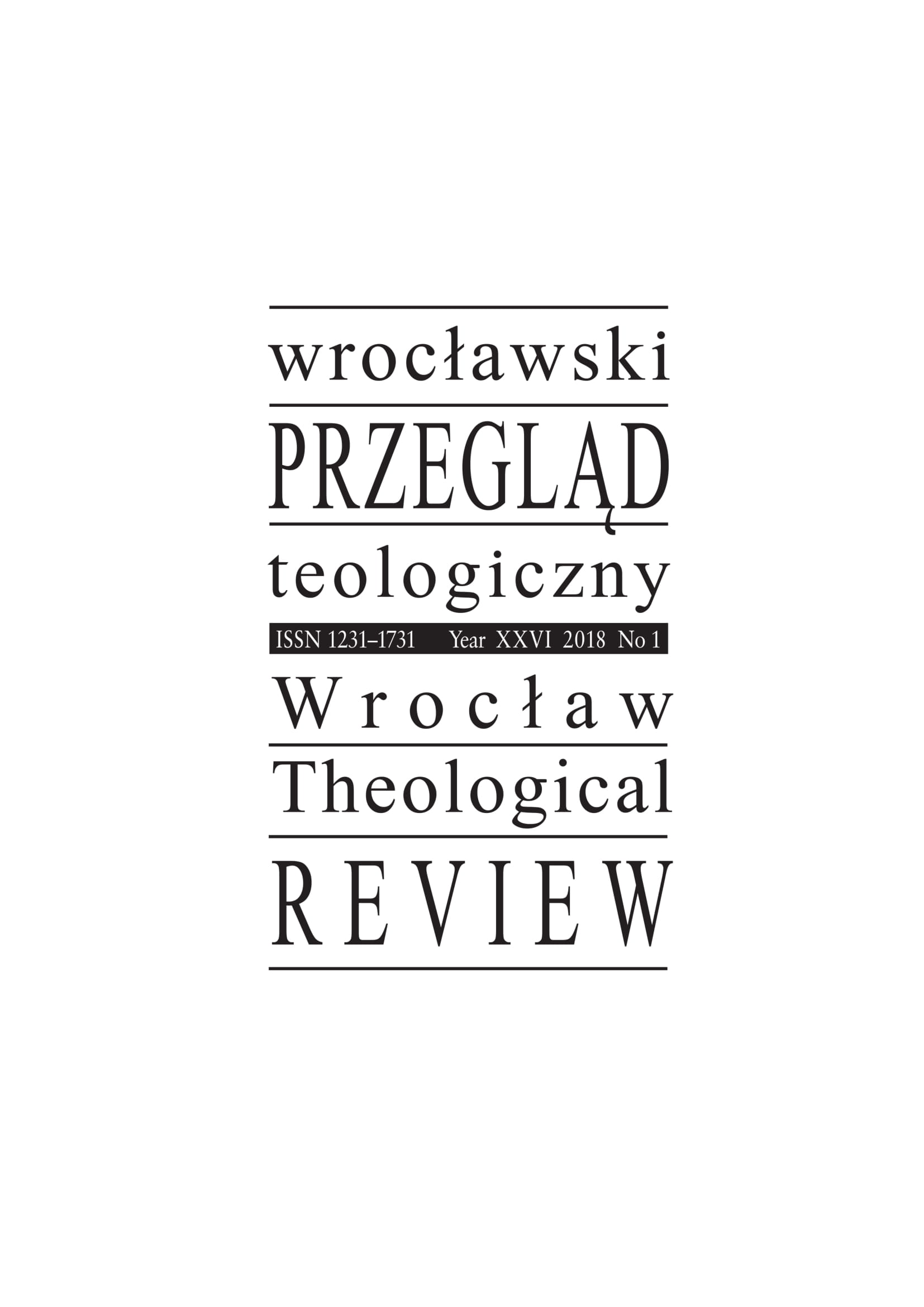

In the first half of the nineteenth century, Russian authorities had very limited knowledge of their Jewish subjects. The government relied more on its enlightened perceptions of the Jews and Judaism than on empirical observation. This situation changed radically in the 1860s, when at the onset of the Great Reforms era the government sought full and veritable information about all imperial subjects, including Jews, to facilitate the efficient policymaking by framing and answering Russian Jewish question. As a result, Russian language studies—written by Jews, Russian Christians, and Jewish converts to Christianity—on Judaism, Jewish history, society and culture started to appear. The article focuses on two such studies: Moisei Berlin's Essay on the Ethnography of the Jewish Population in Russia (1861) and Yakov Brafman's Book of Kahal (1869). Virtual polemics between Berlin and Brafman highlights fundamental differences between Russian studies of Judaism and Jewish life and classical Western European Christian Hebraism, namely, Russian scholars’ general lack of interest to the Talmud and to its alleged anti-Christian thrust, and almost exclusive focus on Jewish communal, social, and political institutes—kahal, chavurot (voluntary societies), beit din (rabbinical court) and others—and on their alleged anti-government nature.
More...
In this article, I examine the way in which Franz Delitzsch envisioned his masterpiece translation of the New Testament into Hebrew, first published in 1877. I focus on the aims Delitzsch attributed to his translation and on the way in which the translation project was embedded in the wider views held by Delitzsch as a Hebraist and a theologian. Furthermore, I show how Delitzsch’s conception of his endeavor structured the translation work itself.
More...
The main aim of this study is to present how early modern preaching in the Czech lands shaped the image of the local Jewish community in Christian eyes at the turn of the 17th and 18th centuries. Bohemian and Moravian preachers, drawing from medieval literature, were fundamentally influenced by the traditional theological concept of Jews as a living witness to the Christian truth. At the same time, baroque sermons reused medieval exempla and miracula preserving typical anti-Jewish narratives. Due to the increasing number of Bohemian and Moravian Jewry at the end of 17th century, and the socio-economical tension between Christian and Jewish communities, catholic preachers pursued contemporary topics and criticized unpermitted contacts, allegedly leading to the inferior status of Christians. On the other hand, these critical notes usually were targeted primarily on Christian believers and their laxity in the observance of religious life, as well as ignorance of social hierarchy. Although the Czech Catholic sermons constructed the hostile perception of Jews, the preachers endeavoured to avoid vulgar anti-Judaism and partly smoothed popular anti-Jewish sentiments.
More...
While the use of the Jews as scapegoats is well documented, less noted is how they have provided a pretext for exploring and writing about heterodoxical ideas that otherwise might cause problems for the author. A case in point is the Adumbratio kabbalae christianae, by seventeenth-century esoteric thinker Franciscus Mercusius van Helmont. Although ostensibly designed to convert the Jews, a close examination reveals that the text was intended to inform like-minded Christians about an esoteric mode of thought that, at the time, was repudiated by Church authorities.
More...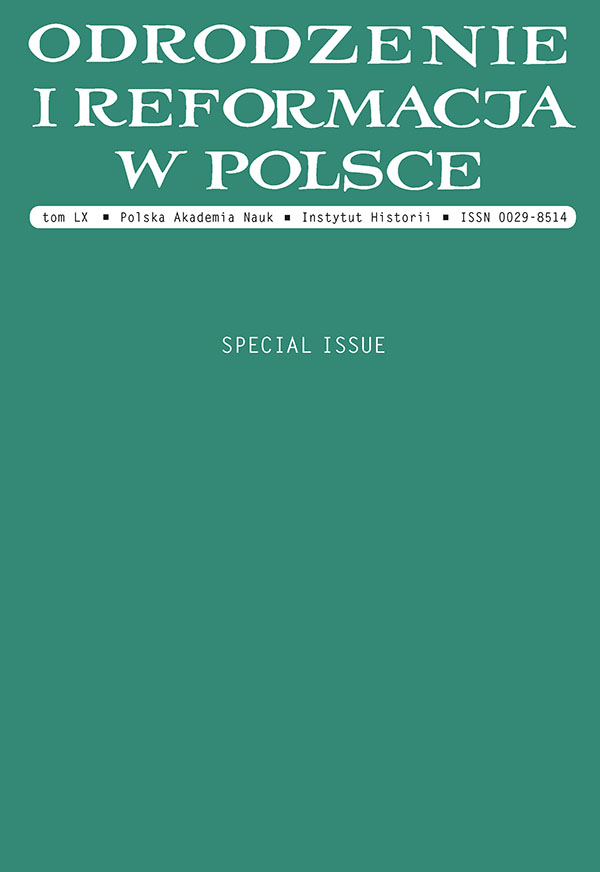
This study is an analysis of the text and sources of the Calvinistic catechism printed in the Nieśwież hymn book (1563), which was previously regarded as a compilation from Sz. Budny’s cyrillic text (1562). The given catechism is a revised translation of the most influential of the Basel Manuscripts, prepared by I. Oekolampad ca. 1525–1529 and edited by his successor O. Myconius as Institutio Christiana in 1544. The Polish version of the Basel Manuscripts reflects the progress of this dogmatic profile of Calvinism in the Polish-Lithuanian Commonwealth and the infl uences of anti-Trinitarianism in Calvinistic instructive and catechetical literature.
More...
The article aims at showing in a new light the confessional situation of the University of Cracow in the sixteenth and seventeenth centuries, using sources omitted in previous research into the topic and thanks to a more detailed analysis of the sources used by other scholars (e.g., Acta rectoralia, university conclusions, rectors’ and professors’ diaries). The Academy of Cracow (as it was called then) was a Catholic institution, thus portraying the attitude of the university’s authorities to non-Catholics in a period of confessional struggle in Cracow and in the Commonwealth seemed promising. Another point was to analyse the possibilities for non-Catholics to function within the walls of the University in different periods of time, as well as to describe the most important events and regulations, which influenced the University’s policy. The author also tried to bring to light the subsequent stages of administrative exclusion (on various levels) of non-Catholic students. However, the contacts of the Academy with religious minorities in Cracow is a matter so complex, that it remained beyond the scope of the article.
More...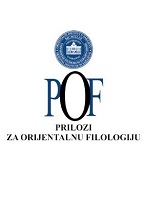
Historical processes lead to significant changes in specific areas and in specific periods of time. This paper focuses on demographic and religious changes that took place in the greater region of Central Bosnia from the beginning of the 17th century until mid-19th century. In terms of territory, the paper focuses on the area of the valley of the River Lašva, with comparison of the processes in a wider context, particularly in terms of territory. The analysis covers almost three centuries and it examines causes, factors and methods that led to the changes. By analysing specific populated areas as well as the region as a whole, the paper establishes the exact time of certain changes, the pace and the reflection of those changes in the field. The corpus includes documents of different origin, from Ottoman as well as church sources. They are not contradictory in terms of basic demographic indicators, and there are no major discrepancies. The level of correspondence between Ottoman sources and those produced by visitors may be deemed very high. On the other hand, interpretation of travel writing and other sources mainly established through oral tradition are rich in free assessment and often shows no correspondence, and such sources cannot sustain critical analysis.
More...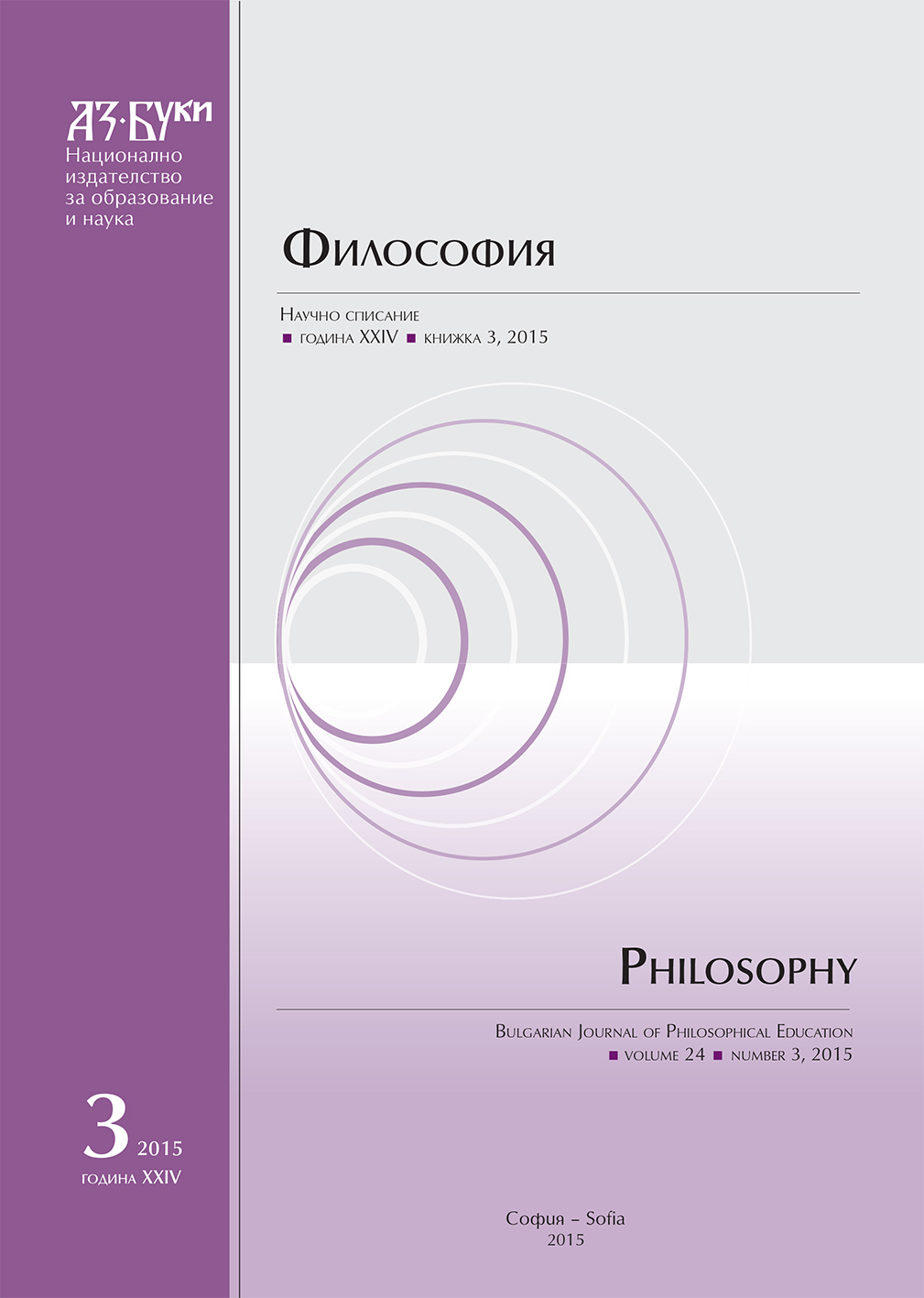
This study examines the problem of the meaning of life and the choice between suffering and pleasure, according to the Biblical book of Ecclesiastes, written by the wisest king that ever lived on Earth, and according to the greatest psychiatrist, founder of the doctrine of Logotherapy, the author of one of the greatest books of our time: Man in Search of Meaning and The Doctor and the Soul – Viktor Frankl. Can we find some similarities in their statements, research, and philosophy? Where is the meaning of human existence: in pleasure or in pain? Why is it important for everyone to find meaning in his/her life? Is this the driving force of humankind forward? Can you live with dignity; what it means, and how to help people that lost the meaning? These are the questions we try to find answers for in this study. The aim is to follow the similarities between the two authors, and to find where modern psychology, logotherapy meet the faith in God.
More...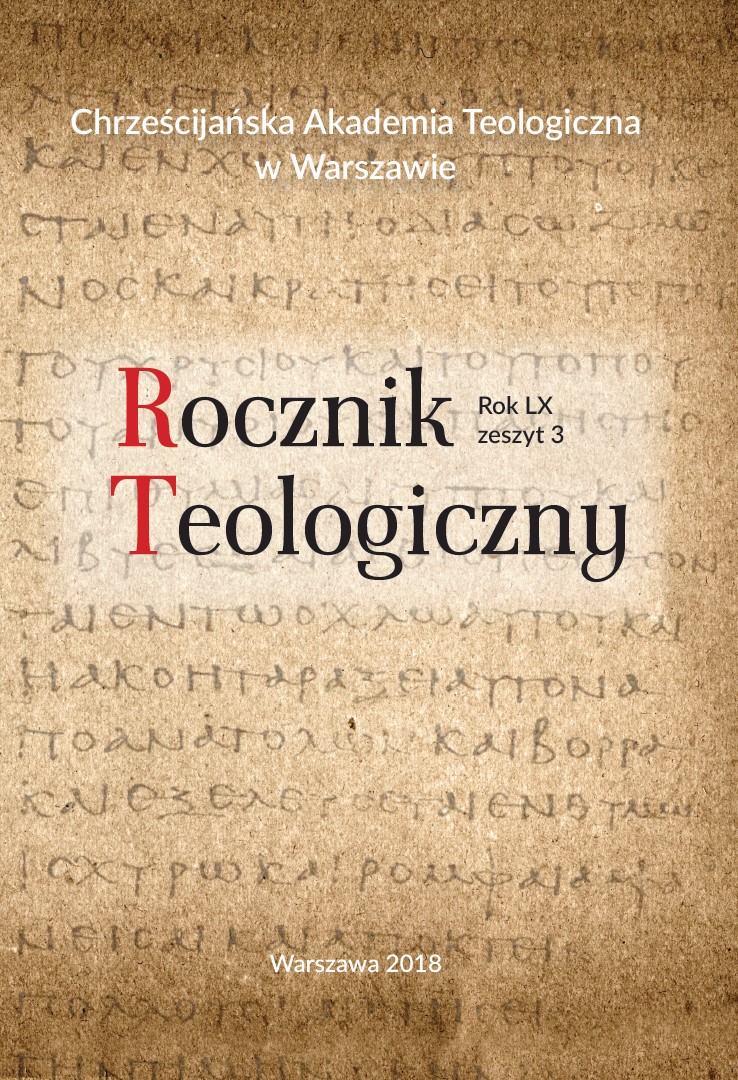
The contact of the Protestant population with the prevailing Catholic population in the Polish territories in the nineteenth century took place on three levels: religious, national and cultural. Protestants and Catholics were strangers to each other. Their systems of values on the religious, cultural, and usually also national level were different. In addition, Evangelical and Catholic opinion-forming circles emphasized mutual distances in order to strengthen faith. Barriers between them, however, were not impassable, as evidenced by quite numerous conversions, mixed marriages, as well as mutual acceptance of their differences in a number of environments and the meeting of cultures. The alienness of Evangelicals and Catholics, often turning into open hostility, was greater in the territories of the Prussian partition than in the Kingdom of Poland or in Cieszyn Silesia. Larger in the end than at the beginning of the 19th century. Th e decisive influence on this fact was the growth of nationalist tendencies, nationalist conflicts, especially Polish-German ones, on the Polish territories.
More...